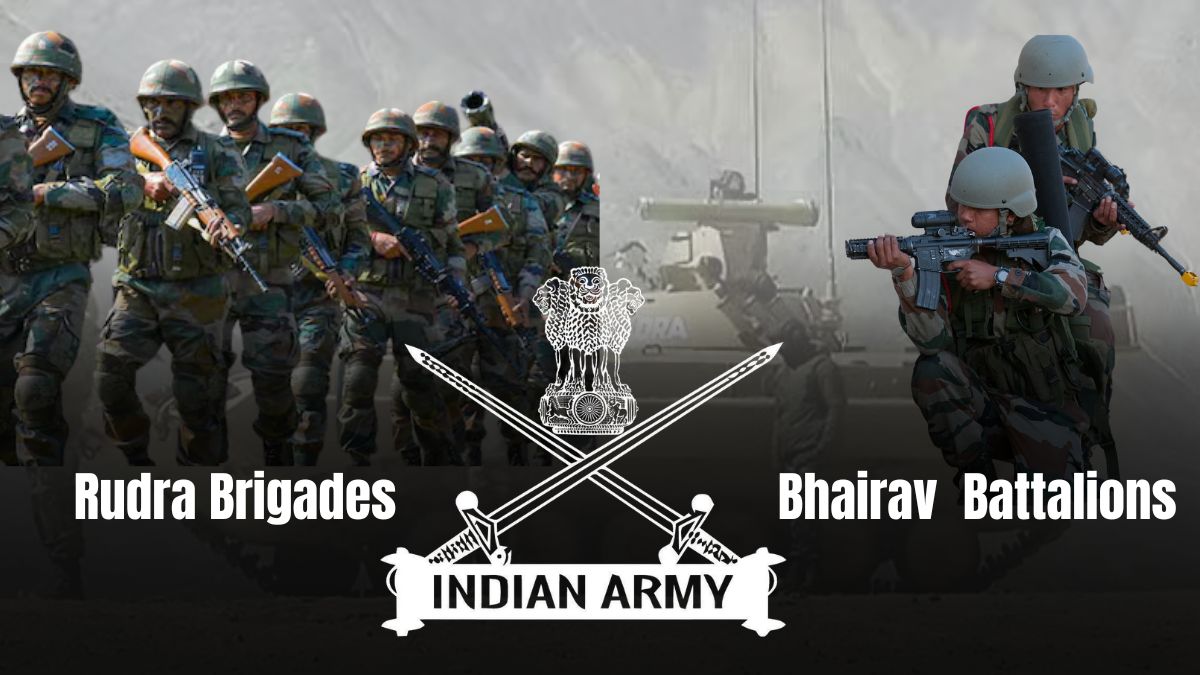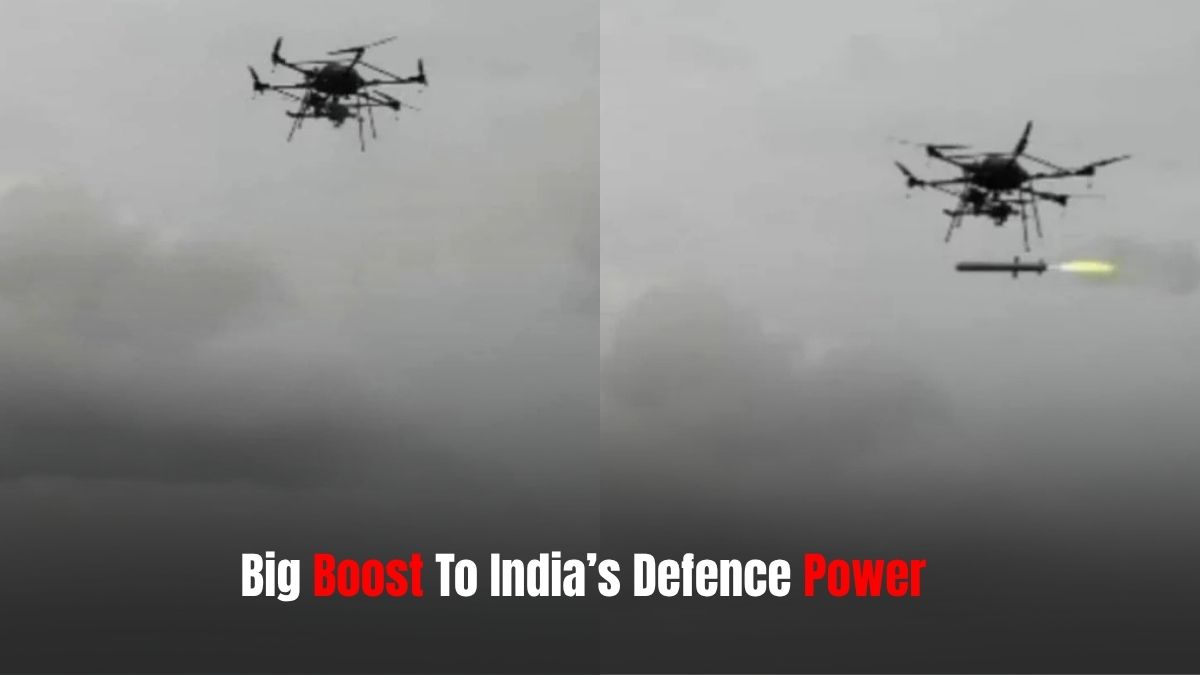The S-400 missile system represents one of India’s most significant defense acquisitions in recent years, providing the country with advanced air defense capabilities that have altered the regional security landscape. This sophisticated Russian-made system forms a crucial component of India’s modernizing military arsenal, offering protection against a wide range of aerial threats at unprecedented distances.
Table of Contents
What is the S-400 Missile System?
The S-400 Triumf (Russian for “Triumph”) is an advanced anti-aircraft missile defense system developed by Russia’s Almaz Central Design Bureau. In India, it has sometimes been referred to as the “S-400 Sudarshan” or “Sudarshan Chakra,” connecting it to India’s cultural heritage. This system represents the cutting edge of air defense technology, having been in service with the Russian Armed Forces since 2007 before being acquired by other countries including India .
The development of the S-400 began during the closing years of the Cold War in the late 1980s, with the Russian Air Force first announcing the system in January 1993. After a series of design improvements and successful tests, including the interception of a ballistic missile in 2004, the system was finally approved for military service in 2007 [source].
Components and How S-400 Missile System Works
The S-400 functions as a complete system comprising several integrated components working together to detect, track, and neutralize aerial threats. At its core, the system consists of:
- Launch vehicles with missiles: These are typically mounted on BAZ or MAZ tractor trucks, which can carry up to four launch tubes housing different types of missiles18.
- Command and control post: This mobile center coordinates the entire system, processing target information and making engagement decisions18.
- Radar systems: The S-400 employs multiple types of radars including:
- Long-range surveillance radar (nicknamed “Big Bird”)
- Acquisition and management radar
- Engagement and fire control radar (nicknamed “Gravestone”)
- All-altitude acquisition radar
- Mobile detection system: For tracking low-flying targets like cruise missiles and drones.

The system operates through a sequential process. First, the surveillance radar detects incoming threats at long distances. The command center then evaluates these targets and decides whether to engage them. If engagement is authorized, the appropriate missiles are launched based on the target’s range and characteristics. Typically, the system launches two missiles at each target as a redundancy strategy. The engagement radar guides these missiles toward their targets, maintaining constant communication with the surveillance radar to adjust trajectories based on real-time target movements18.
Impressive Capabilities of S-400 Missile System
The S-400’s capabilities are what make it truly remarkable as a defensive weapon system. It can detect and track up to 300 targets simultaneously while engaging 36 threats at once15. Its surveillance capability extends to 360 degrees around the deployment area, allowing it to monitor airspace in all directions.
One of the system’s most significant advantages is its extensive range. The S-400 can engage threats at distances up to 400 kilometers with its longest-range missiles. This creates a massive protective bubble around critical assets and infrastructure. The system can also engage targets at various altitudes, from as low as 100 feet up to 40,000 feet (about 30 kilometers) above ground level.
The S-400 is designed to counter multiple types of aerial threats, including:
- Stealth aircraft
- Fighter jets
- Unmanned aerial vehicles (drones)
- Cruise missiles
- Ballistic missiles
India’s Acquisition Journey
The Deal and Its Significance
In October 2018, India signed a landmark $5.43 billion deal with Russia for five S-400 missile system units. This acquisition, costing approximately Rs 35,000 crore, represented a major investment in India’s air defense infrastructure [source]. The deal came despite potential complications with the United States, which had expressed concerns about India purchasing major defense systems from Russia .

The first S-400 unit arrived in India in December 2021 and was swiftly deployed in the western sector to strengthen national security[source]. This was followed by the delivery and operationalization of the second and third units over the next two years, reinforcing India’s defense posture along both western and eastern sectors.
Current Deployment Status
As of May 2025, India has received and operationalized three squadrons of the S-400 system. These units have been strategically positioned along India’s borders with Pakistan and China to protect critical areas and provide a deterrent against potential aerial threats.
In a notable demonstration of its capabilities, during an earlier Indian Air Force exercise, the S-400 system reportedly “shot down” 80% of simulated enemy aircraft in a training scenario, forcing the remainder to abort their missions. This impressive performance has reportedly caused concern in neighboring countries, with reports suggesting that Pakistan has relocated its F-16 fleet to more distant bases to avoid detection and engagement by the S-400’s extended reach.
Delivery Challenges and Timeline
While India has successfully deployed three units, the delivery of the remaining two squadrons has faced significant delays. Initially expected by 2025, the delivery is now projected to extend into early 2026. These delays have been attributed to multiple factors:
- The COVID-19 pandemic disrupted global supply chains and manufacturing capabilities.
- The ongoing Russia-Ukraine conflict has severely impacted Russia’s military-industrial complex, shifting focus toward meeting domestic wartime demands.
- Transportation and logistical challenges have complicated the delivery process.
Despite these setbacks, IAF Chief Air Chief Marshal AP Singh confirmed in October 2024 that India expects to receive the final two squadrons of the S-400 system by 2025.
Technical Advantages for India’s Defense
Multi-Layered Defense Capability
One of the S-400’s most valuable features for India is its ability to provide layered defense using different types of missiles for various ranges and threat profiles. The system can deploy:
- Very Long-Range Missiles (40N6): With a 400 km range, these can intercept threats well before they approach protected assets.
- Long-Range Missiles (48N6DM): With a 250 km range, these form the system’s baseline interceptor capability.
- Medium-Range Missiles: With approximately 120 km range.
- Short-Range Missiles (9M96E): With around 40 km range, designed for engaging moving targets at shorter distances.
This multi-layered approach allows India to engage different types of threats at varying distances, creating a comprehensive defensive envelope around critical areas.
Advanced Detection and Tracking
The S-400’s sophisticated radar systems provide India with unprecedented situational awareness of its airspace. The system can detect and track low-observable and stealth aircraft using advanced methods, which is particularly valuable given the increasing deployment of stealth technology in the region.
Its phased array radars offer robust electronic protection measures, allowing them to function effectively even in environments dense with electronic warfare and jamming attempts[source]. This resilience is crucial in modern combat scenarios where electronic countermeasures are common.
Mobility and Rapid Deployment
Another significant advantage for India’s defense strategy is the S-400’s mobility. All components are mounted on wheeled vehicles, allowing for relatively quick transport between different locations. The system requires only 5-10 minutes for setup, enabling rapid deployment in response to emerging threats.
This mobility supports “shoot and scoot” tactics, where the launchers can fire missiles immediately after stopping, then quickly relocate to avoid counter-strikes. Such flexibility is valuable in the context of India’s extensive borders and varied terrain.
Strategic Significance for India
Regional Power Balance
The successful deployment of the S-400 Sudarshan Chakra has significantly strengthened India’s air defense shield, providing a credible deterrent against both conventional and asymmetric aerial threats. Its presence has not only addressed immediate security concerns but has also redefined the strategic calculations in the region.
The system’s 400 km range extends well into neighboring territories, creating large “no-fly zones” or areas of denied access where adversary aircraft would face significant risk of interception. This capability forces potential adversaries to reconsider air operations near Indian borders, effectively expanding India’s defensive perimeter and creating strategic breathing space.
Border Security Enhancement
With ongoing tensions along both western and northern borders, the S-400’s deployment has particular significance for India’s border security. The system’s ability to detect and engage multiple targets simultaneously means that coordinated air attacks-a common modern warfare tactic-can be effectively countered.
The S-400’s capability to detect stealth aircraft also addresses emerging threats as neighboring countries develop or acquire advanced fighter jets with reduced radar signatures. This helps maintain India’s defensive edge despite evolving aerial threats in the region.
Comparison with Regional Systems
When compared to other air defense systems in the region, the S-400 offers significant advantages:
- It has longer detection and engagement ranges than Pakistan’s air defense systems
- It provides more comprehensive coverage than India’s existing older defense systems
- It compares favorably with China’s HQ-9 system, which has a shorter detection range (200 km) and fewer missile options
These advantages help solidify India’s position in the regional security architecture and counter the growing aerial capabilities of neighboring states.
Integration and Future Prospects
Integration with Existing Defense Networks
For maximum effectiveness, the S-400 needs to be integrated with India’s broader air defense network. The system is designed to interface with other air defense systems, exchanging data to create comprehensive coverage15. This networking capability allows it to function as part of India’s layered defense strategy, complementing existing systems like indigenous Akash missiles and other imported platforms.
The command posts can coordinate sensors and launchers across wide areas, creating an interconnected defense web that maximizes the effectiveness of all available resources15. This integration capability is particularly valuable given India’s diverse collection of defense systems from various sources.
Training and Operational Readiness
With three units already operational, the Indian Air Force has developed significant expertise in operating and maintaining the S-400 system. Personnel training has been a crucial component of the deployment process, ensuring that operators can fully leverage the system’s capabilities.
The reported success in military exercises suggests that integration into India’s operational procedures has been effective. As more units arrive and are deployed, this operational experience will further enhance the overall effectiveness of India’s air defense network.
Future Potential and Challenges
While the S-400 represents a significant leap in capabilities, its full potential depends on successful delivery and deployment of all five contracted units. The ongoing delays highlight the challenges of international defense procurement, particularly during global conflicts and supply chain disruptions.
Additionally, the S-400 may require periodic updates and modifications to counter evolving threats and countermeasures. Russia’s ability to provide such support might be affected by ongoing geopolitical situations, creating potential long-term maintenance challenges.
Despite these considerations, the S-400 system represents a transformative acquisition for India’s defense forces, providing capabilities that will remain relevant for many years. Its deterrent effect alone justifies the investment, creating strategic advantages even without being actively used in conflict.
Conclusion
The S-400 missile system represents a significant enhancement to India’s defense capabilities, providing long-range protection against various aerial threats. Despite delivery delays, the three operational units have already strengthened India’s strategic position and security posture. The system’s advanced technology, extensive range, and multi-layered defense approach make it a formidable asset in India’s military arsenal.
As India awaits delivery of the final two units, expected by early 2026, the S-400 continues to reshape regional security dynamics. Its deployment has created new strategic realities that potential adversaries must consider in their military planning. While challenges remain in terms of complete delivery and long-term integration, the S-400 has already proven to be a game-changing acquisition for India’s air defense capabilities, living up to its nickname of “Sudarshan Chakra”-the legendary divine weapon known for its unstoppable force.
Frequently Asked Questions (FAQ)
1. What is the S-400 Missile System?
The S-400 Triumf (Russian for “Triumph”) is a long-range, advanced air defense system developed by Russia’s Almaz Central Design Bureau. India refers to it as the “S-400 Sudarshan” or “Sudarshan Chakra” , linking it to Indian cultural symbolism. It detects and neutralizes aerial threats like stealth aircraft, drones, cruise missiles, and ballistic missiles at ranges up to 400 km
2. Why did India acquire the S-400 despite U.S. opposition?
India signed a $5.43 billion deal with Russia in 2018 for five S-400 units to bolster its air defense against regional threats like China and Pakistan . Despite U.S. concerns under CAATSA sanctions, India prioritized strategic autonomy and defense modernization, balancing its ties with both Russia and the West
3. How many S-400 units does India currently operate?
As of May 2025 , India has three operational S-400 squadrons , strategically deployed along its borders with Pakistan and China to deter aerial aggression . The remaining two units face delays due to the Russia-Ukraine conflict and supply chain disruptions, with delivery expected by early 2026
4. Can the S-400 counter stealth aircraft like China’s J-20?
Yes. The S-400’s advanced radar systems, including the “Big Bird” surveillance radar , can detect and track low-observable (stealth) aircraft. This capability addresses India’s growing concerns about adversaries deploying stealth technology
5. How does the S-400 enhance India’s defense strategy?
- Multi-Layered Defense : Uses missiles like 40N6 (400 km range) and 9M96E (40 km) to engage targets at varying distances .
- Mobility : Rapid deployment (5–10 minutes setup time) supports “shoot-and-scoot” tactics to evade counterattacks.
- Deterrence : Forces adversaries like Pakistan to relocate military assets (e.g., F-16 jets) to avoid coverage.
6. What challenges does India face with S-400 integration?
- Technical : Integrating Russian systems with India’s Western/NATO-standard equipment poses compatibility issues .
- Geopolitical : U.S. CAATSA sanctions risk complicating future defense cooperation.
- Maintenance : Reliance on Russian spare parts amid ongoing conflicts could disrupt long-term support
7. How does the S-400 compare to regional systems like China’s HQ-9?
The S-400 outperforms China’s HQ-9 in range (400 km vs. 200 km) and versatility, offering multiple missile types for diverse threats. This gives India a strategic edge in South Asia’s evolving security landscape
8. What role does the S-400 play in India’s border security?
The system creates “no-fly zones” near disputed borders, deterring aerial incursions. Its 360° surveillance capability allows simultaneous tracking of 300 targets and engagement of 36 threats , countering coordinated attacks.
9. How effective is the S-400 in real-world scenarios?
During Indian Air Force exercises, the S-400 intercepted 80% of simulated enemy aircraft , forcing the remainder to abort missions. This performance highlights its operational readiness and deterrent value.
10. What’s next for India’s S-400 program?
India plans to fully integrate the S-400 with its existing air defense network, including the Akash and Barak-8 systems. Future upgrades may address emerging threats like hypersonic weapons, ensuring the system remains relevant for decades








